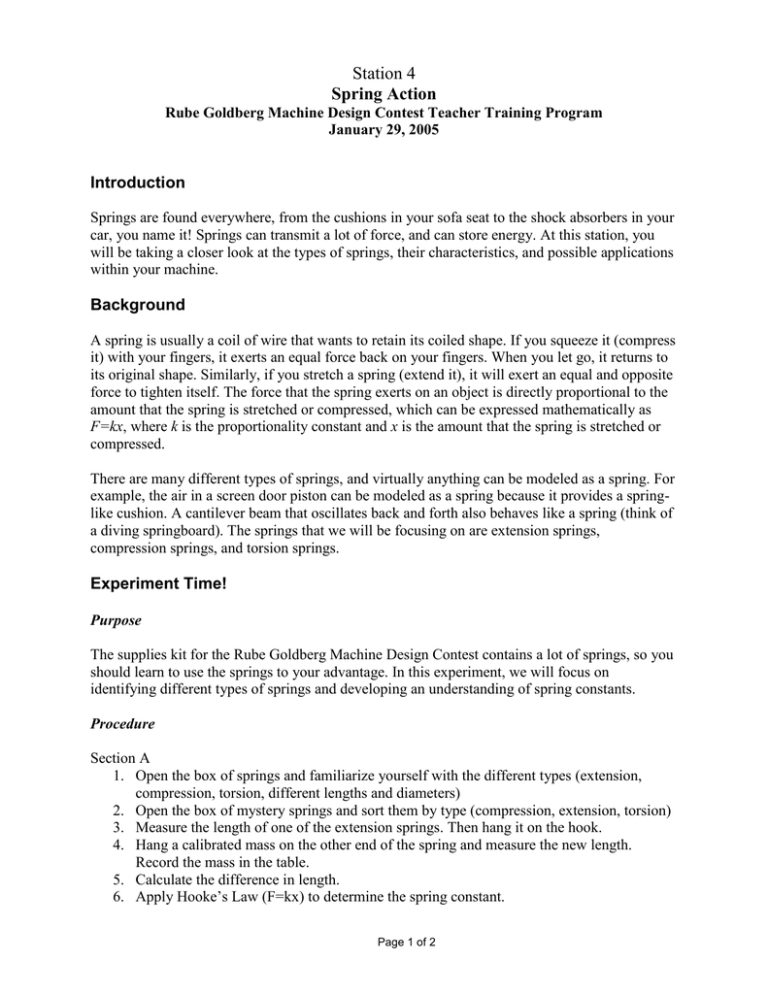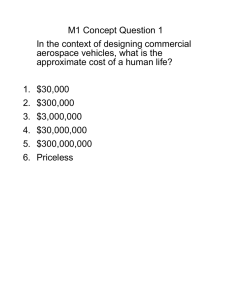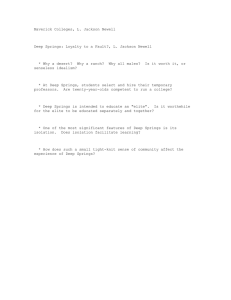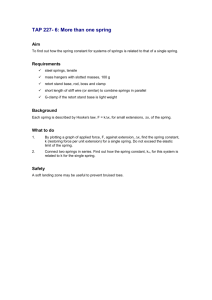Spring Action experiment
advertisement

Station 4 Spring Action Rube Goldberg Machine Design Contest Teacher Training Program January 29, 2005 Introduction Springs are found everywhere, from the cushions in your sofa seat to the shock absorbers in your car, you name it! Springs can transmit a lot of force, and can store energy. At this station, you will be taking a closer look at the types of springs, their characteristics, and possible applications within your machine. Background A spring is usually a coil of wire that wants to retain its coiled shape. If you squeeze it (compress it) with your fingers, it exerts an equal force back on your fingers. When you let go, it returns to its original shape. Similarly, if you stretch a spring (extend it), it will exert an equal and opposite force to tighten itself. The force that the spring exerts on an object is directly proportional to the amount that the spring is stretched or compressed, which can be expressed mathematically as F=kx, where k is the proportionality constant and x is the amount that the spring is stretched or compressed. There are many different types of springs, and virtually anything can be modeled as a spring. For example, the air in a screen door piston can be modeled as a spring because it provides a springlike cushion. A cantilever beam that oscillates back and forth also behaves like a spring (think of a diving springboard). The springs that we will be focusing on are extension springs, compression springs, and torsion springs. Experiment Time! Purpose The supplies kit for the Rube Goldberg Machine Design Contest contains a lot of springs, so you should learn to use the springs to your advantage. In this experiment, we will focus on identifying different types of springs and developing an understanding of spring constants. Procedure Section A 1. Open the box of springs and familiarize yourself with the different types (extension, compression, torsion, different lengths and diameters) 2. Open the box of mystery springs and sort them by type (compression, extension, torsion) 3. Measure the length of one of the extension springs. Then hang it on the hook. 4. Hang a calibrated mass on the other end of the spring and measure the new length. Record the mass in the table. 5. Calculate the difference in length. 6. Apply Hooke’s Law (F=kx) to determine the spring constant. Page 1 of 2 7. Repeat steps 3-6 for two more extension springs. A stiffer spring corresponds to what kind of spring constant value? Mass Weight Natural Length New Length Difference Spring Constant Section B 1. Choose an extension spring and a calibrated mass. 2. Measure the natural length of the spring. Hang the calibrated mass on the end of the spring and measure the new length. Record the length measurements and the mass in the table. 3. Hang another calibrated mass on the end of the spring and measure the new length. Record both values in the table. 4. Repeat for a few other masses. Calculate the spring constant. What’s the relationship between the spring constant, the spring length change, and the mass (i.e. force applied)? 5. Repeat for another spring. Mass Mass Weight Weight Natural Length Spring 1 New Length Difference Spring Constant Natural Length Spring 2 New Length Difference Spring Constant Now you can design your own experiment with the springs! Page 2 of 2



